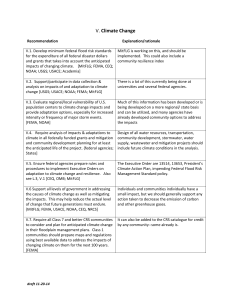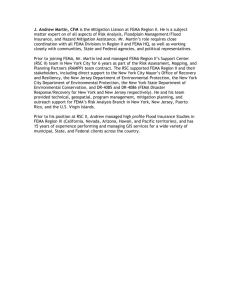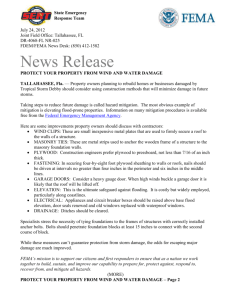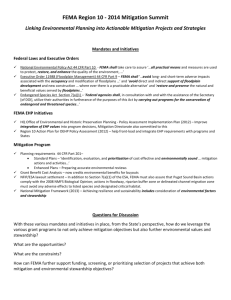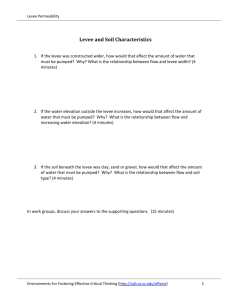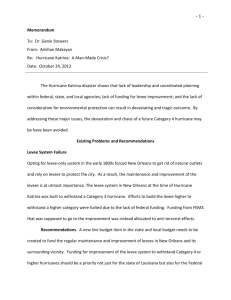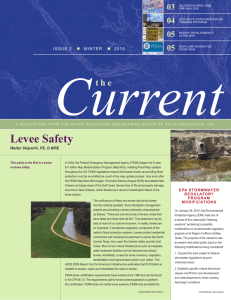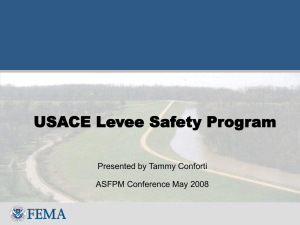jim_murphy_-_National_Research_Foundation_Bio._1-21
advertisement
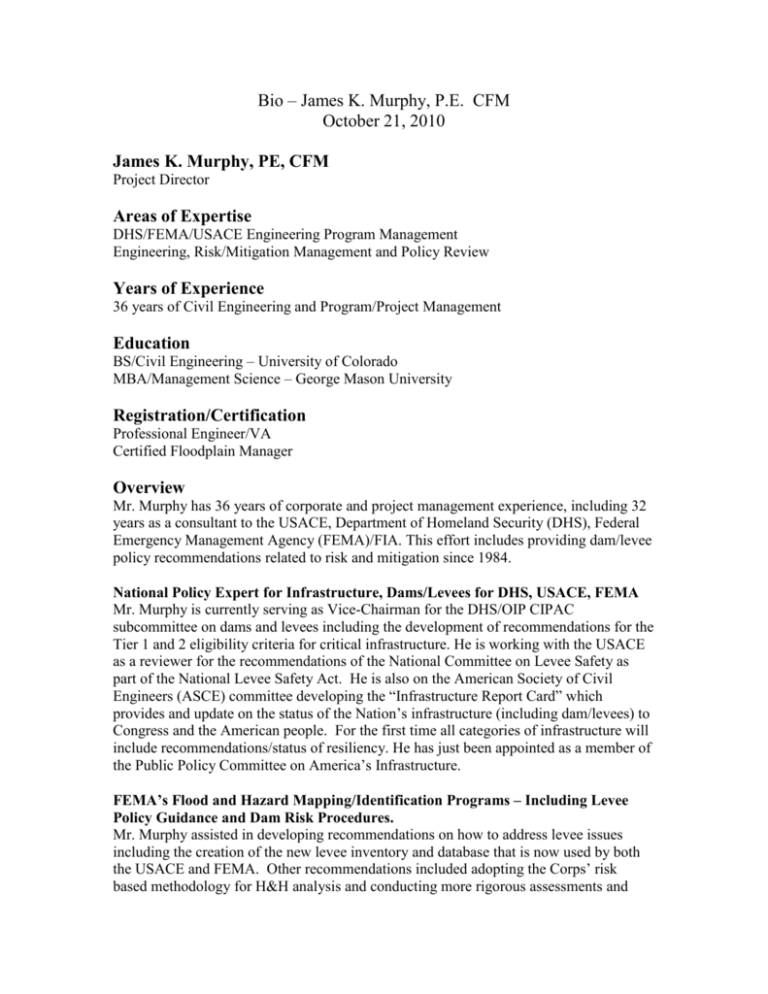
Bio – James K. Murphy, P.E. CFM October 21, 2010 James K. Murphy, PE, CFM Project Director Areas of Expertise DHS/FEMA/USACE Engineering Program Management Engineering, Risk/Mitigation Management and Policy Review Years of Experience 36 years of Civil Engineering and Program/Project Management Education BS/Civil Engineering – University of Colorado MBA/Management Science – George Mason University Registration/Certification Professional Engineer/VA Certified Floodplain Manager Overview Mr. Murphy has 36 years of corporate and project management experience, including 32 years as a consultant to the USACE, Department of Homeland Security (DHS), Federal Emergency Management Agency (FEMA)/FIA. This effort includes providing dam/levee policy recommendations related to risk and mitigation since 1984. National Policy Expert for Infrastructure, Dams/Levees for DHS, USACE, FEMA Mr. Murphy is currently serving as Vice-Chairman for the DHS/OIP CIPAC subcommittee on dams and levees including the development of recommendations for the Tier 1 and 2 eligibility criteria for critical infrastructure. He is working with the USACE as a reviewer for the recommendations of the National Committee on Levee Safety as part of the National Levee Safety Act. He is also on the American Society of Civil Engineers (ASCE) committee developing the “Infrastructure Report Card” which provides and update on the status of the Nation’s infrastructure (including dam/levees) to Congress and the American people. For the first time all categories of infrastructure will include recommendations/status of resiliency. He has just been appointed as a member of the Public Policy Committee on America’s Infrastructure. FEMA’s Flood and Hazard Mapping/Identification Programs – Including Levee Policy Guidance and Dam Risk Procedures. Mr. Murphy assisted in developing recommendations on how to address levee issues including the creation of the new levee inventory and database that is now used by both the USACE and FEMA. Other recommendations included adopting the Corps’ risk based methodology for H&H analysis and conducting more rigorous assessments and review of current levee conditions and operations and maintenance procedures. He was and member of the FEMA interagency policy review committee to address “The National Levee Challenge”. Mr. Murphy also assisted in the development of the Code of Federal Regulations 65.10, defining the engineering and other requirements for levee certification. Mr. Murphy is currently overseeing the development of two FEMA task orders to develop standardized procedures on how to conduct a dam failure consequence assessment, and how to model and map dam failure inundation areas. Hazard Guidelines and Building Code Assessments As a member of the National Institute of Building Sciences (NIBS) Advisory Committee under contract to FEMA for the integration of building codes, created innovative, implementable solutions to the challenges of building in a multi-hazard environment. This included investigating conflicts between different building codes and FEMA mitigation recommendations. Risk Reduction to Infrastructure Systems Mr. Murphy served as a member of the advisory committee to the American Lifelines Alliance (ALA) initially under ASCE and then the National Institute of Building Sciences (NIBS). Their mission is to establish a public-private partnership between FEMA and industry, with the goal of reducing risks to lifelines (utility, transportation, communication systems) from natural and man-made hazards. Developed guidelines and specifications for industry to follow to mitigate losses and build in redundancy and resiliency. He was Project Manager for the ALA ‘Hazard Matrix” which compiled the Nation’s guidance for reducing damage to infrastructure from both natural and manmade hazards, including terrorism. HAZUS Loss Estimation Project for Floods Mr. Murphy managed the hydrology and hydraulic modeling of the engineering and GIS segments of the HAZUS project as a subcontractor to NIBS in support of FEMA. He oversaw the development of software to assist in providing hazard identification and vulnerability analyses, including investigations into how to account for levee locations and possible failure. HAZUS is a national multi-hazard model using GIS to characterize hazards and aid in mitigation by allowing users to generate various hazard scenarios and predicting their outcomes. FEMA Mitigation, Response and Recovery Contracts Served as Project Director for contracts with both the Public Assistance and Individual Assistance Groups within FEMA. Dispatched teams of engineers and inspectors within 48 hours to analyze damages, determine economic and life-cycle costs, conduct environmental assessments, and quality control plans, for public infrastructure, including failed levees. Oversaw the preparation of state and local mitigation plans to minimize losses from natural and manmade hazards
